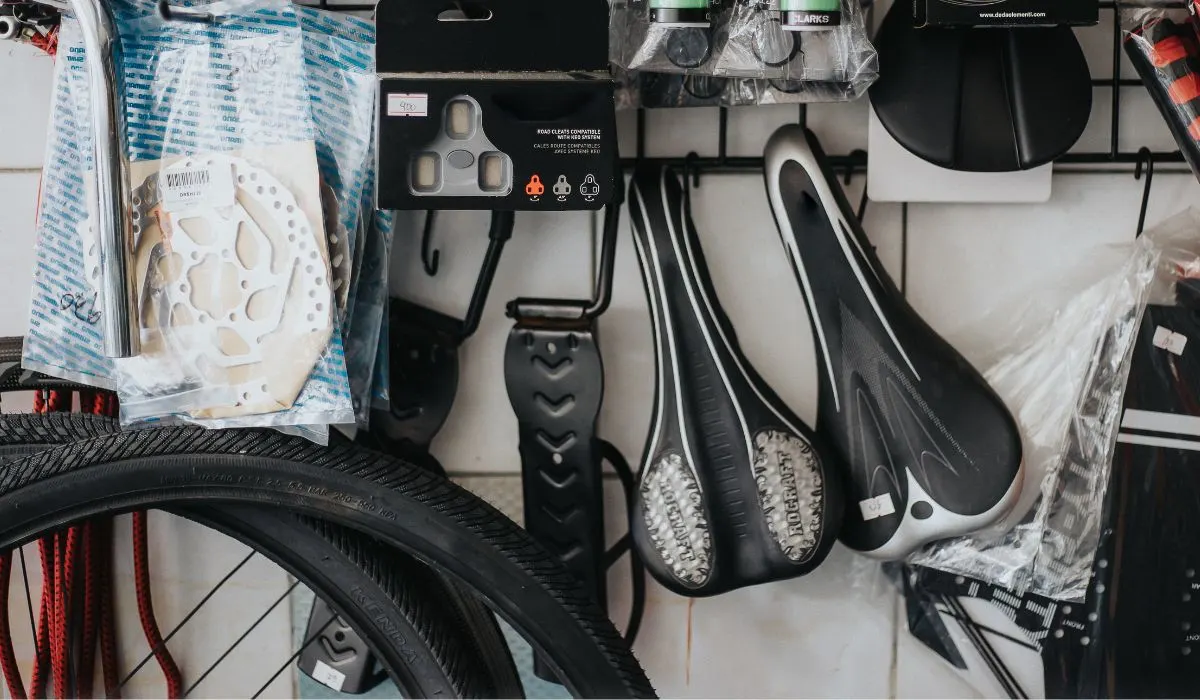
Being in the market for a new bike is one of the most exciting exercises for any cyclist. However, it can also be pretty daunting. Bikes, especially higher-end bikes, are far from cheap so choosing the right one is essential. The fact that you’re reading this most likely means that you’ve narrowed your choice to Scott and Trek, but which is the best one?
Both Scott and Trek are well-known bike brands. However, especially in mountain biking, Scott has excelled on the cross-country circuit, while Trek has had success with downhill and enduro bike lines. In addition, Scott offers a five-year frame warranty, and Trek offers a lifetime warranty.
It’s important to shop for a bike that fits your riding. In the battle between Scott and Trek, it may end up being your riding preference that seals the deal. With that being said, there are some important differences between the brands you should know about.
Scott or Trek: Which Should You Get?
The hypothetical battle between Trek and Scott would be evenly matched in many areas, but there are differentiated elements as well. These are elements that require close consideration when you are trying to decide which is the better bike for you.
Who Makes The Better Frame?
Probably the most important differentiating factor is the frame. In the end, this is where each manufacturer has the opportunity to set themselves apart in terms of:
- technology
- weight
- styling
- geometry
The right frame is the most significant difference between a good bike and a great bike.
Trek and Scott make bicycle frames across the spectrum from:
- entry-level
- mid-range
- higher-end
- elite carbon frames
Scott is generally well known for focusing its design efforts on frames as light and fast as possible. The Scott Spark, for example, has long been a featured competitor on the world cup cross-country circuit.
Comparatively, Trek has a reputation for building tried and tested frames, solid and sturdy. For this reason, they have a pretty strong presence in the enduro and downhill mountain bike scenes.
However, that doesn’t mean that their lighter racing steeds are slogs by any measure. Some of the biggest names in the cross-country world have been earning gold medals in the saddles of Trek Supercalibres for years.
For the average buyer, the difference comes down to weight versus price. In other words, dollar for dollar, you will likely be able to buy a lighter Scott frame.
Who Has The Better Components?
Another area of intense competition between the two manufacturers is in the arena of components. Both Scott and Trek have their own subsidiary component manufacturers, namely Syncros and Bontrager.
There aren’t all that many differentiating factors between the two house brands. Syncros has around 30 years of experience, while Bontrager has come into its own and can go toe-to-toe with some of the best. Both offer products that are comparatively cheaper than non-house brands.
However, there may be differences in areas that matter to you. For example, Bontrager is known for making dropper posts with longer travel and arguably making better wheels. Likewise, Syncros has good handlebars.
Decide what type of bike you are looking for and then check which house brand makes components better suited to your riding style.

Who Has The Better Technology And Innovation?
The continuous desire and effort to improve their products is a vital characteristic of any bicycle manufacturer that hopes to stick around. An excellent way to assess a better manufacturer is by looking at the innovations and technologies they have brought onto the market.
That’s not to say that all innovative ideas stick. Some may be fly-by-night gimmicks, while others may be revolutionary.
As an example of this, the road bike Aero Bars (like this example sold on Amazon) were invented by Scott. They have also won two awards recently for innovations in the e-bike segment. Most recently, their racing snake cross-country bikes have adopted a new frame that nearly hides the rear shock, shielding it from debris.
On the other side of the ring, Trek has all but revolutionized the full-suspension cross-country bike with its new Isostrut rear shock. This shock reduces the number of pivots needed by incorporating it straight into the frame. It also makes the bike considerably lighter.
Innovation shouldn’t just be limited to top-tier bikes. For example, there is a growing demand for hardtail mountain bikes (like this example sold on Amazon) that can handle a fair deal of punishment and navigate harder trails. Here Trek has won with their Roscoe series which offers a highly capable trail hardtail and a very affordable price.
Who Has The Bigger Product Range
Most people are probably shopping around on a budget, which can limit you to a certain price category with limited options. If a manufacturer has a bigger product range, there will be more options within a budget.
It is commonly agreed that Trek focuses its efforts predominantly on product ranges that are:
- entry-level
- high-end
- elite-end
Recently, Trek has expanded its mid-tier foothold as well.
On the other hand, Scott is not known for entry-level products. Instead, they have an extremely strong presence in the mid to high-end ranges. In South Africa, for example, Scott’s only major competition in the mid-tier range is Giant, so they enjoy a healthy amount of success in that market.
NOTE: If you are interested in Scott bikes vs Giant, check out my article here which has a full breakdown and comparison between the two.
This is important to understand because if a manufacturer has a sizeable market share in a specific range, then they are bound to pour a lot of research and development into that range.
Who Makes The Better Pro Bike?
It should be safe to say that if a bike is good enough for a pro rider, then it is definitely good enough for you. A manufacturer’s presence on the professional circuits further drives them to continue to improve and improvise.
If we look at the road bike circuit, neither would likely stand out against the Italian names, but that’s not to say that they don’t feature. Both brands have a Tour de France presence, with Team DSM saddling Scott bikes and Trek-Segafredo riding a radically new Trek Madone. The latter bike is said to be Trek’s fastest racing bike ever.
On the dirt, Scott has definitely continued to thrive on the cross-country circuit, helmed by the likes of Kate Courtney and the legend Nino Schurter. But don’t discount Trek, who have held many medals of their own with riders like the fantastic Jolanda Neff.
Getting really dirty on the downhill slopes, you have riders like Brenden Fairclough riding for Scott. Trek has guys like Loris Vergier and until they recently started building their own bikes, the great Atherton family.
What deep research into their presence on the pro-scene reveals is that Scott and Trek are neck-on-neck in most cases. But, there does seem to be a trend of Trek holding up better on rougher rides, like downhill, while Scott is pushing toward making better speed-steed for cross country.
This doesn’t mean that Scott makes bad downhill bikes or that Trek makes slow cross-country bikes; it is simply a perception of where their focus seems to be stronger.
Who Uses The Better Drive Train?
If you know enough about bikes, then you probably already know that comparing drivetrains between bikes is a zero-sum game. Like Intel and AMD in the computer world, the drive train world is dominated by Shram and Shimano. So take your pick of preference.
What is worth noting is that you will likely get better components on the Scott when looking at a same-priced Trek and Scott side-by-side. At least, that has been the case in the past, but bikes like the Trek Roscoe perhaps indicate a shift in the winds.

Who Has The Better Warranty?
In the fashion of saving the potential deal maker or breaker for last, Trek has a better warranty by far.
Scott bikes come standard with a 5-year frame warranty, whereas Trek bikes have a limited lifetime warranty, which is a huge difference.
However, it must be noted that these warranties apply to the bike frame and will cover you for cracks and breaks. You may be sorely disappointed if you break a chain or wheel hub and expect it to be covered under this warranty.
Which Bike Rides Better?
Finally, there is a subjective fact that you need to consider very carefully. No one else besides you is going to:
- be on the bike saddle with you
- care what the name is on the frame
- care about the color
- care about the suspension
- care about the components
- care about the geometry
Somewhere, someday, you will find yourself on a remote road, all alone. It’ll be just you and your bike. At that point, you will wish that you bought the bike that:
- feels best
- fits you the best
- you are the most comfortable and confident on
FACT: Any warranty is meaningless for a bike you hate riding.
Conclusion
Both Scott and Trek are trusted manufacturers that make excellent bikes. Their bikes are loved by pro riders and amateur cruisers alike. Both have come up with exciting, innovative ideas. Still, Trek has potentially been excelling in this area with great ideas on mid-tier hardtails.
Scott bikes are usually slightly better priced than Trek and have been lighter on average. However, this has perhaps changed with Trek’s new Madone road racer and Proexcalibre cross-country bikes. Furthermore, Trek offers a lifetime frame warranty, whereas Scott only gives a 5-year warranty.
You might also be interested in:
